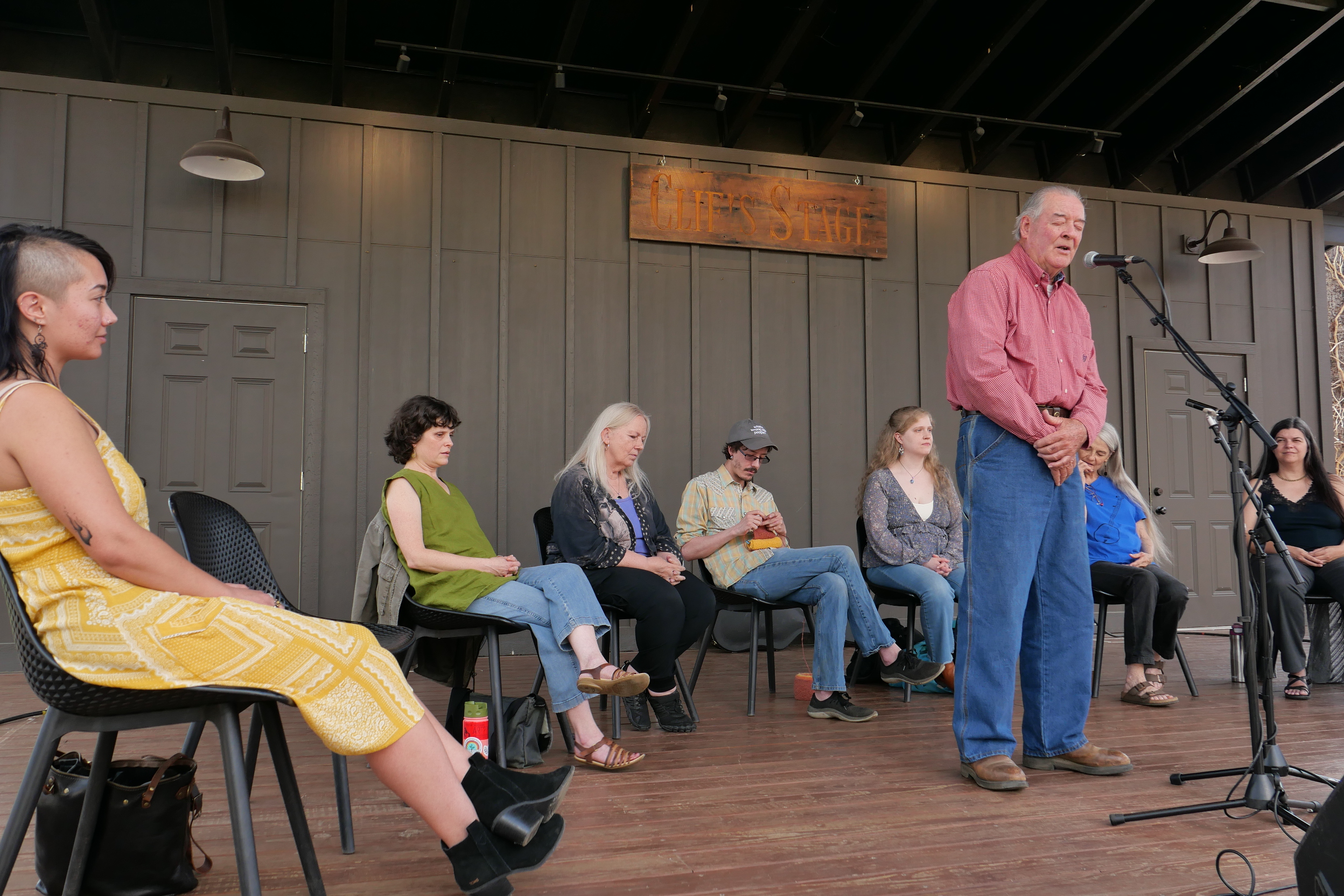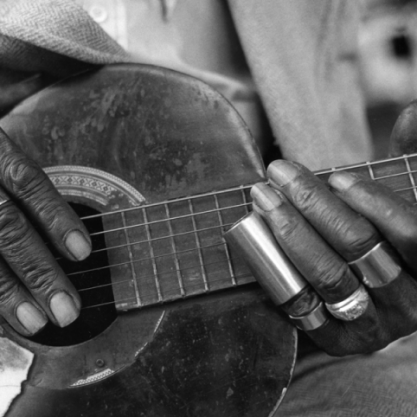The enduring power of Appalachian ballad singing

Last October, we announced the creation of the Carolina Music Makers Fund (CMMF), an aid fund for musicians affected by Hurricane Helene in the Carolinas and beyond. While the storm’s devastation has since moved out of the headlines, it continues to shape daily life for mountain communities and the artists who keep their traditions alive.
In addition to her work as Artist Outreach Coordinator for CMMF, Olivia Phillips is a PhD candidate studying Folklore at Indiana University. Her dissertation examines the role of singing traditions in Beech Mountain, NC in shaping residents’ past and present ideas about local identity and heritage. As Olivia wraps up her time at Music Maker, we asked her to share what makes Appalachian ballad singing such a powerful, unique, and enduring tradition.
Appalachian traditional, old-time, or Anglo-American ballad singing is one of the most haunting and enduring folk practices in Western North Carolina. Ballads are songs that tell stories. They have no choruses or refrains, only verses—often quite a lot of them! Old-timers have called Appalachian traditional ballads “love songs” to distinguish them from sacred songs and shorter folk songs with refrains, but their themes are more complex than the nickname suggests. Telling of unrequited love, heartache, murder, and tragedy, some Western North Carolina ballads are homegrown American folk songs, but many traveled here with settlers from Great Britain and Ireland before mingling with the music of other ethnic groups in the New World. The ballads’ references to castles, lords, ladies, knights, and oceans have surprised audiences in Southern Appalachia, far from those European roots, for generations.
Dissonance between the singers’ geographic locations and the songs’ apparent settings is compounded by melodies that music theorists may identify as pentatonic or Dorian, but most listeners would simply hear as mysterious, lonesome, or strange. Though each verse in a ballad is sung to the same melody, singers may ornament or embellish verses differently. It’s little wonder these ballads continue to be adapted by contemporary folk and Americana musicians throughout the English speaking world.
Ballads in Southern Appalachia captured the attention of folklorists in the 1910s, when social reformer and folk documentarian Olive Dame Campbell (founder of the John C. Campbell Folk School in Brasstown) realized the people she met in Western North Carolina, East Tennessee, Southwest Virginia, and Eastern Kentucky were singing many of the same folk ballad types classified by Harvard literary scholar Francis James Child in the ten-volume English and Scottish Popular Ballads. Child’s findings, published between 1882 and 1998, had become widely known to the next generation of ballad scholars. Campbell approached English folklorist Cecil Sharp, who then traveled the region from 1916 to 1918 in search of ballads and their singers.
The title of the volumes Sharp published following his travels, English Folk Songs of the Southern Appalachians, reflects his interest in Appalachia as a place where English-descended people preserved folk traditions no longer practiced in England itself. Musicians and scholars today recognize that Western North Carolina and the rest of the Appalachian region have always been more ethnically varied than this interpretation suggests, and that Appalachians of many ethnicities have certainly shaped our region’s musical traditions. However, the legacy of Sharp’s documentation in preserving Western North Carolina balladry cannot be overstated.
Madison County is usually considered the center of balladry in our state today, though other communities, such as Old Beech Mountain in Watauga and Avery Counties, have a documented history of active ballad singing as well. Individual communities of ballad singers may have their own aesthetic preferences, performance conventions, and favored ballads. Jane Hicks Gentry, the singer from whom Sharp collected the most songs, was born into the Beech Mountain tale-telling Hicks and music-making Harmon families. She lived most of her adult life in the Madison County town of Hot Springs.
North Carolina’s Appalachian ballad singing tradition has a continuing presence to complement its rich history, and Music Maker is pleased that we were recently able to support several NC ballad singers through the Carolina Music Makers Fund.
For contemporary examples of the tradition, listen to Music Maker Artist Sheila Kay Adams, CMMF grantees from the Madison County-based collective Nest of Singing Birds, and CMMF grantee Rick Ward of Watauga County.
For historical examples, Olivia recommends the recordings of Dillard Chandler, Dellie Norton, and Cas Wallin of Madison County and Buna Hicks and Lee Monroe Presnell of Old Beech Mountain.

Get involved
& give back
The Music Maker Foundation is a 501(c)(3) nonprofit organization that depends on thousands of supporters. Together, we work to meet the day-to-day needs of the artists who create traditional American music, ensure their voices are heard, and give all people access to our nation’s hidden musical treasures. Please contribute or shop our store today.

